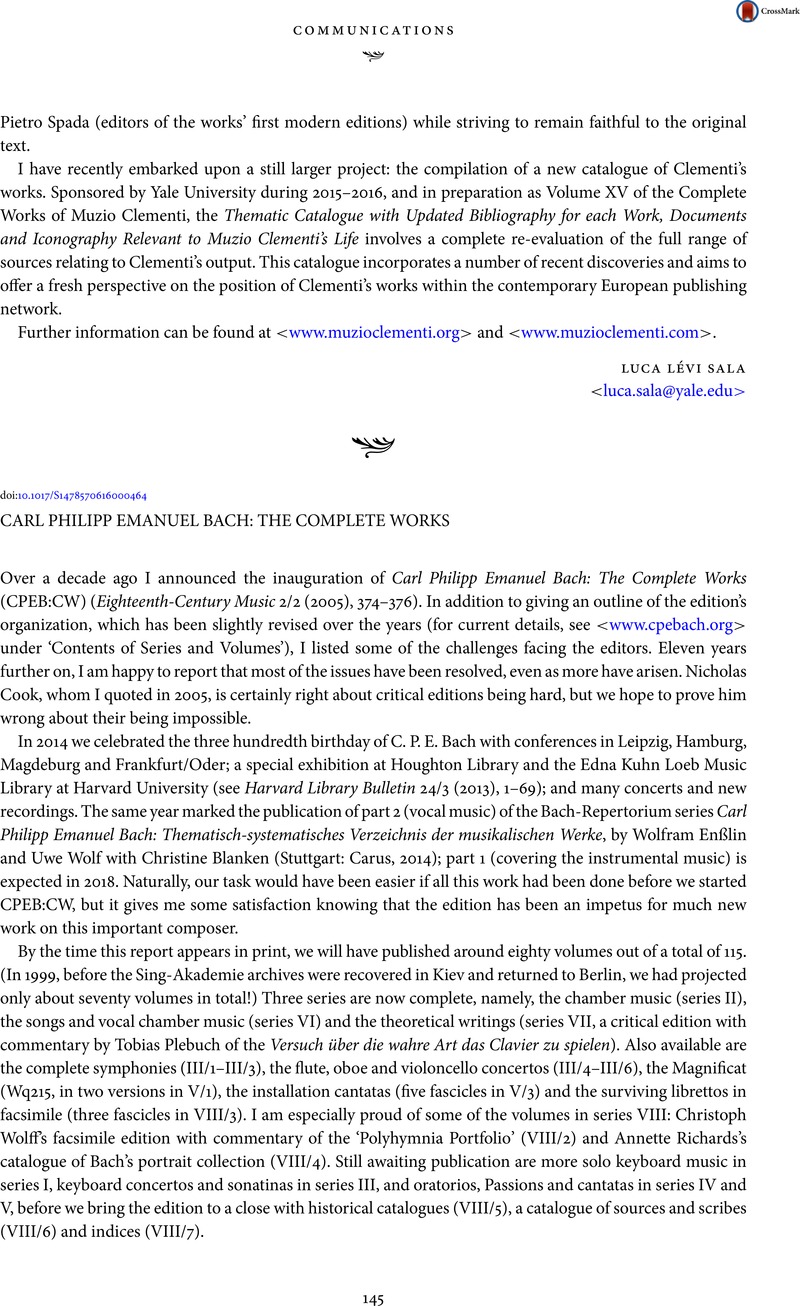No CrossRef data available.
Article contents
CARL PHILIPP EMANUEL BACH: THE COMPLETE WORKS
Published online by Cambridge University Press: 16 February 2017
Abstract
An abstract is not available for this content so a preview has been provided. Please use the Get access link above for information on how to access this content.

- Type
- Communications: Reports
- Information
- Copyright
- Copyright © Cambridge University Press, 2017




